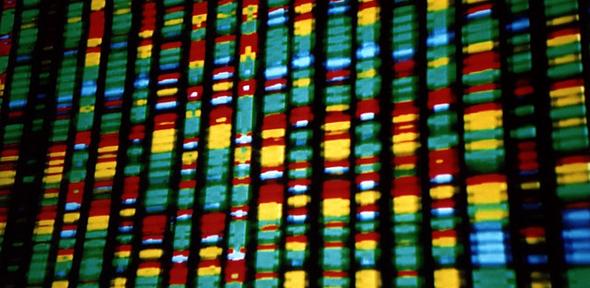In the May 15, 2014, edition of the journal Nature, Floyd Romesberg’s chemistry lab at San Diego’s Scripps Research Institute published a paper titled “A Semi-Synthetic Organism with an Expanded Genetic Alphabet.” Romesberg and his colleagues had created a bacterium incorporating chemical building blocks that, as far as anybody knows, have never been part of any earthly life form.
There had been previous claims to “creating life.” Genome pioneer Craig Venter led a team that manufactured a genome for a germ that causes pneumonia in cows, but their effort used the familiar chemical bases of DNA, known by the letters A, G, C, and T. Romesberg’s group, on the other hand, added two additional letters, dubbed X and Y. When the bacteria successfully replicated X and Y in succeeding generations, Romesberg’s lab could claim to have made the first living thing with an expanded genetic code.
“People would ask what the big deal is, and I said, ‘Imagine you had a language with only four letters’” Romesberg says. “‘It would be clumsy and would really curtail the kinds of stories you could tell. So imagine two more letters. Now you could write more interesting stories.’”
New drugs are the most obvious story that could be told with the technology. A startup company called Synthorx, created by Romesberg and the venture fund Avalon Ventures, says it has exploited E. coli bacteria containing X and Y to help manufacture a protein, a step the company’s president and CEO Court Turner describes as “our baby unicorn.” The company didn’t identify the protein, except to say it is “well studied” and that they’d added a new function to it, a way for another drug to attach to the protein at a specific site.
The technology might also pave the way to new biotech drugs. Nearly all such drugs, proteins like insulin or the blood cell-booster erythropoietin, are made inside a bacterium or other cell. But synthetic DNA could vastly expand what drugs are possible. That is because a normal cell builds proteins from just 20 amino acids, stringing them together into long chains. Exactly which amino acid gets added next is specified by three-letter sequences of DNA, called codons.
Although the math gets complicated, with the addition of the new bases X (chemical name d5SICS) and Y (chemical name dNaM), Romesberg approximately tripled the number of possible codons, and theoretically increased to 172 the number of different amino acids a cell could build a protein from..
Source: MIT Technology Review




